
A visit to Egypt is a lifelong dream for many. While it is a quick, often repeated jaunt for Europeans who have access to cheap short flights and packages, for North Americans and others, it is often a once-in-a-lifetime experience. If you’d like to make the most of your trip to Egypt consider the following for your first or next trip.
Egypt is 96% desert, with the majority of its 100 million citizens packed into the narrow Nile Valley and the lotus-shaped Delta. Nevertheless, it is often said that Egypt houses 1/3 of the world’s antiquities. One thing is certain, no other destination offers up five millennia of history, architecture, archaeology, and art like Egypt does.
In this guide, I will help you make the most of your visit, whether for the first or tenth time. I’ve lived here for a total of nearly 20 years and I have lived and traveled all over the country. I will share with you some of my favorite archaeological sites, historical homes, museums, and quirky off-the-beaten-path sites to visit. I also will share with you some tips on the best places to stay, eat and where to purchase handicrafts and folk art to add to your collection.
Three Ways To Visit Egypt
There are three ways to visit Egypt: a package tour, a private tour, or independently.
- Package tours hit the major sites and can include a Nile cruise between Luxor and Aswan. You will meet like-minded travelers and your costs will be more predictable.
- Private tours can be surprisingly affordable. A tour company can provide you with a car and driver and a tour guide who will explain the sites you visit. You can design your own itinerary or ask the company to put one together for you.
- Traveling independently requires more research and an adventurous nature. Get a few good guidebooks and study them carefully if you wish to use this approach.
Best Time To Visit Egypt
With regards to choosing the best season to visit Egypt, it’s a tradeoff between the weather, pricing and crowds at tourist sites.
- Winter is the tourist high season in Egypt and archaeological sites and museums can be crowded with long lines and obstructed views. Hotels are more expensive in the winter, but airfares are cheaper because flight prices follow the European tourist seasons.
- Summer temperatures can be unbearable, especially in Luxor and Aswan, and hot and humid in Alexandria and Cairo. However, you might have the archaeological sites to yourself if you can stand it. However, summer airfare is high and route options more limited, especially for those traveling from North America and you can find yourself with excruciatingly long transfers in Europe.
- Spring (March and April) and fall (late September and October) see fewer tourists than the high season and warm but less oppressive weather and reasonable airfares. Another tip is to visit during or right after some international crisis if you want empty sites, rock bottom prices and a warm welcome.
About Cairo
Greater Cairo has a population of 25 million, give or take a few. Egyptians call it the Mother of the World and for good reason, it offers up a bit of everything for everyone. In the following, I’ll tell you how to experience Egypt’s three main historical and religious phases; the pharaonic, Christian, and Muslim periods, and many of my favorite must-see places to visit and dine.
Get the latest articles delivered to your inbox
Sign up to our Free Weekly Newsletter
The Giza Pyramids & Saqqara
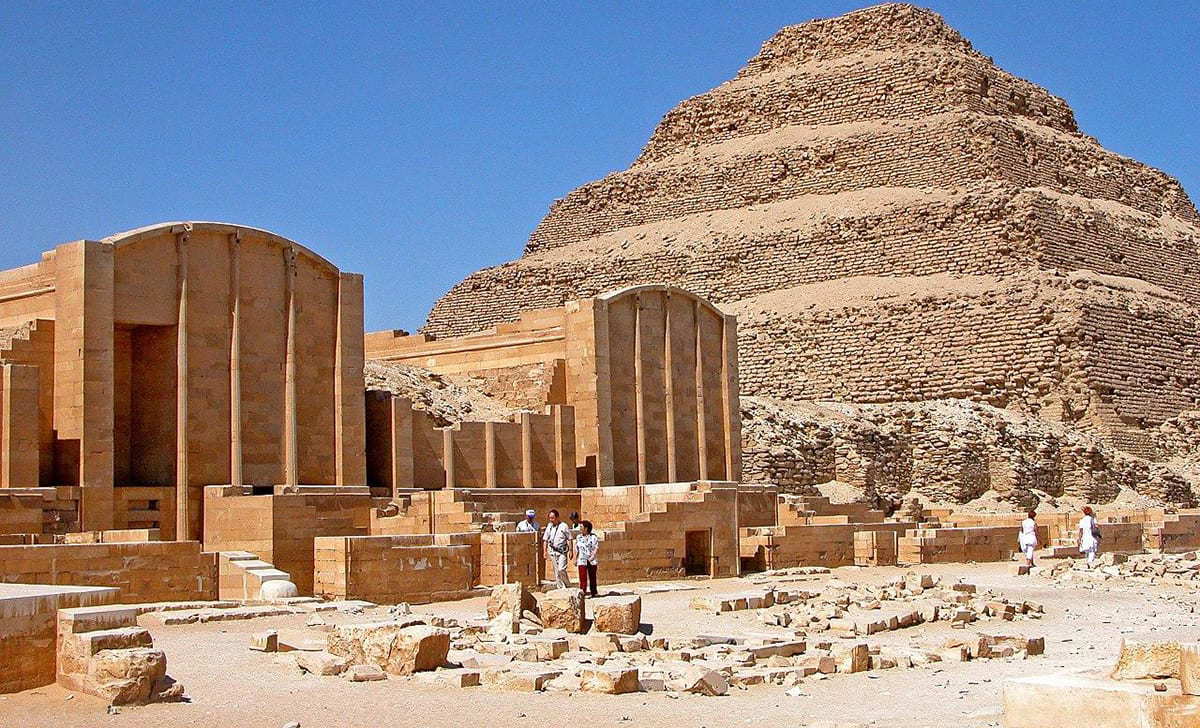
A visit to the Giza Pyramids is obligatory, but can be disappointing. Your approach to the pyramids is marred by the ugly skyline of ugly architectural development and smoggy skies. Camel owners will pester you into taking a ride. Therefore, I recommend you keep your visit short before moving on to Saqqara, the most impressive archaeological site in Egypt.
Saqqara is located south of Cairo about an hour’s drive and you will need to hire a taxi for the trip. Its most imposing monument is the complex of the Step Pyramid of Djoser. In the early 20th century, this site was in ruins. Over 70 years, French architect Jean-Francois Lauer painstakingly reconstructed it. He made it as much his own work as it is the work of the ancient architect Imhotep.

What makes a visit to Saqqara unforgettable though is the private tombs at the site. Most date to Egypt’s Old Kingdom and their fine carved relief shows daily life in that period. Also worth seeing is Horemheb’s tomb. This king’s final resting place was in the Valley of the Kings. However, before he became king he was an army general and had an open courtyard tomb built with reliefs depicting his military career.
The Ramses Wissa Wassef Arts Centre

On your way back to Cairo, stop at the Ramses Wissa Wassef Arts Centre. An open workshop for intricate tapestries depicting natural life in Egypt, they are the modern counterpart to the daily life scenes you just saw. These carpets are often purchased by Japanese visitors who find them a practical complement to their home lifestyle.
As of the date of this writing, the situation with museums displaying pharaonic artifacts in Cairo is in flux. While it remains open to visitors, the Egyptian Cairo Museum in Tahrir Square is undergoing many changes. Much of its collection is being moved to the yet to be opened Egyptian Grand Museum.
Islamic Cairo & Everything In Between

To get a taste for Islamic Cairo, walk from the northern Bab al-Futuh gate of Islamic Cairo to the Bab Zuweila, two entrances to the medieval walled city. The first part of this route is called Sharia al-Mueizz and its Islamic architectural gems have been restored to attract tourists and locals alike. As you wander down the cobblestone street, closed to vehicular traffic, you will encounter many important monuments.
Among the historical houses preserved in Cairo, Bait al-Suhaymi is the one I would most like to live in. The house was built in the 17th century in what was then a wealthy and exclusive area. Its grand reception hall upstairs demonstrates some of the hallmarks of Egyptian architecture. First, it has an opening at the north end of the hall that would have captured the prevailing north breeze. Second, mashrabiya, a wooden screen that lets in light and air but maintains the privacy of the occupants, covers this opening.
The next place I suggest stopping is the Textile Museum. This museum takes you on a chronological journey from ancient times to the present day through the lens of Egypt’s textile industry. From mummy shrouds to Muslim prayer rugs, you will learn how Egyptians first used linen, and now cotton, to weave clothing and other practical items. In addition to viewing these items, you will learn about the tools and methods used to produce them. The exhibits are well labeled with explanatory panels.
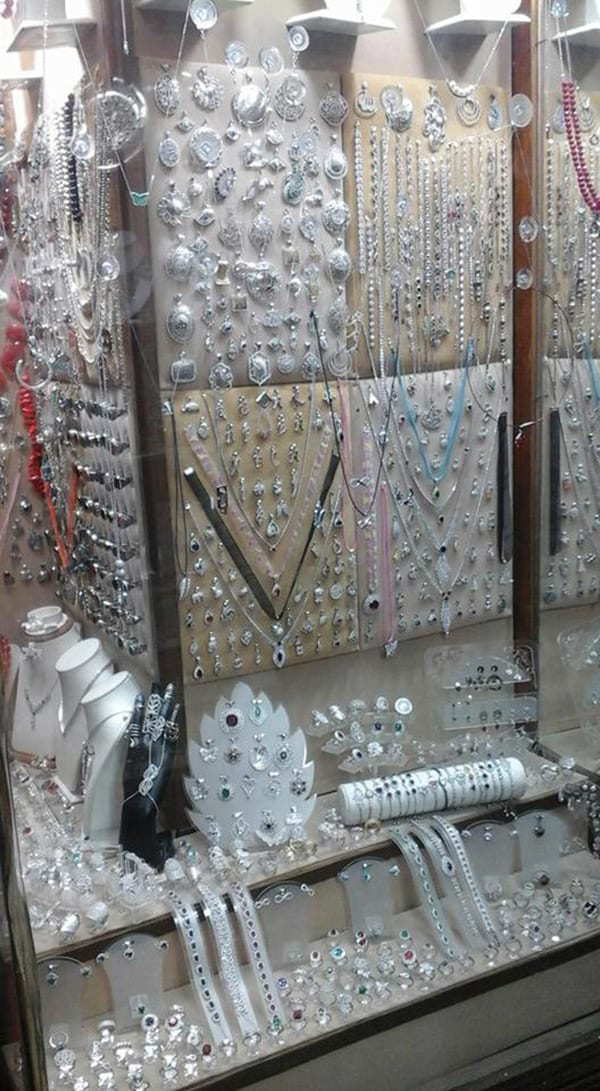
After this, you will reach Khan al-Khalili, Egypt’s most famous bazaar. A lot of shops here hawk touristy schlock, but for collectors, those selling antique silver are worth a rummage through. At this point, you may also wish to have a glass of mint tea at the iconic Fishawi Cafe or if you are hungry, you can grab a bite at any of a number of restaurants in the area.

After you cross Azhar Street via the underpass, your journey goes through a much more commercial zone. You will find people selling everything from blankets to robes to underwear in this section of your walk. Eventually, you will reach the Bab Zuweila, the southern gate of Islamic Cairo. There is a hole in the top of the gate through which boiling water could be poured on anyone attempting to breach it. The Mosque of al-Muayyad is built next to the gate and is open to visitors outside of prayer times.

If you go just beyond Bab Zuweila, you will reach the Khayimmiya, the tentmakers’ bazaar. Nowadays, they make colorful appliqué pieces that range from small table runners to large wall hangings.
Egypt’s Old Cairo
Old Cairo is where Cairo was founded by ‘Amr ibn al-As’ in 640 CE when he built the first mosque in Egypt. The current mosque that bears his name is a descendant of the original structure but none of the original buildings remains.

But even before this, a Roman fort known as Babylon was built on the site. Its foundations remain today and several Christian churches are built on top of it. One of these is the Greek Orthodox Church of Saint George. Most Egyptian visitors to the Church of Saint George aren’t interested in the church itself but the crypt beneath it. Here, people leave votive offerings and even letters to Saint George asking him for help. When their wishes are fulfilled, they have plaques made thanking him for his intercession.

After you visit the Church of Saint George, head straight north until you reach the Greek cemetery. The mausoleums of the many Greek families that once lived in Cairo are in various states of repair. Some of these mausoleums are quite elaborate and even feature pictures of the deceased, a reminder of the pharaonic traditions.

Looking for handicrafts? visit the nearby Souq al-Fustat with its unique artisan shops selling handicrafts or the al-Fustat Ceramics Center where you can see artists in action.
Alexandria, Egypt
Alexandria is a three-hour drive from Cairo and it can make a good day trip with an early enough start or an overnight stay for those who wish to explore the seaside city at a more leisurely pace.

The Royal Jewelry Museum is an over the top historical home packed to the rafters with bling and kitschy interior decoration. Formerly the home of Princess Fatima Al-Zahraa Haidar built-in 1919, it gives Tutankhamun’s treasures a run for their money. The museum houses a collection of jewelry and other gold encrusted artifacts. These belonged to Mohammed Ali dynasty that ruled Egypt during the 19th century and the first half of the 20th. The house features European-inspired stained glass. Look up at the bathroom ceiling and you will see a rather shocking mural that reflects the racist attitudes of the period it was built.
Bibliotheca Alexandrina
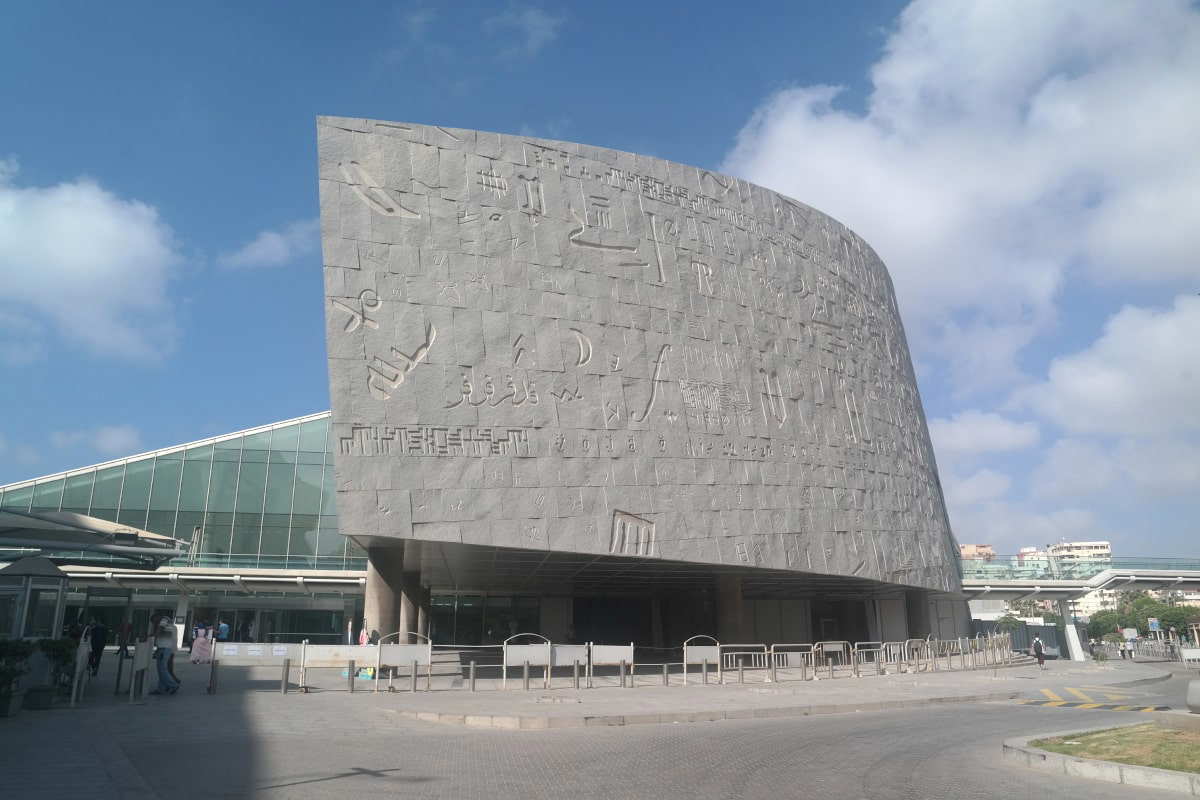
Alexandria’s Bibliotheca Alexandrina opened at the turn of the millennium with a lot of fanfare. Intended as a modern revival of the ancient library of Alexandria, the library has fallen short in its book collections. However, it houses several museums that will give you a wide-ranging view of Egypt. This includes an antiquities museum, a manuscript museum, a museum on the history of science and another dedicated to the late president Sadat, along with special exhibit space. Sit in one of the Norwegian-designed chairs in the reading room. You will wish you had one of these ergonomic marvels in your office.
The Roman Amphitheater

The Roman amphitheater is another must-visit. Here you will find remains of the ancient university of Alexandria with small classrooms and a larger amphitheater. If you stand right at the bottom of the U-shaped part of the amphitheater and speak, you will experience the advanced knowledge of the physics of Alexandria’s ancient scientists firsthand. Your voice will be amplified for the entire theatre without a microphone.
Excavations at the site have also revealed a bathhouse and a beautiful mosaic floor in a house.
Kom al-Shoqafa Catacombs

This funerary complex descends three levels below the ground. The design of the catacombs combines ancient Egyptian religious iconography with Greek and Roman elements. Rooms for funerary banquets, Roman-style with couches, complete the complex.
Taste the Seafood
While in Alexandria, tasting the bounty of the Mediterranean Sea is a must. Two of my favorite restaurants are San Giovanni, overlooking the iconic Stanley Bridge, or the traditional Alexandrian Greek-influenced Athineos Cafe. Whichever restaurant you choose, be sure to order the seafood rice, a spicy pilaf topped with raisins and nuts.
Luxor, Egypt
Most tourists visiting Luxor stay in the city itself, but it is noisy, crowded and smelly from the horse carriages ferrying tourists around. A better choice is to rent a furnished apartment on the West Bank, to be closer to most of the historical sites as well as enjoy the calm among the green sugar cane fields that dominate the landscape.
Deir el-Medina and the Valley of the Kings
I recommend visiting these sites together as they will give you insight into how the workmen who built the tombs in the Valley of the Kings, lived, worked and died. At Deir el-Medina, you can walk around the perimeter of their village, visit some of the tombs of the workmen, and visit a temple that postdates the occupation of the site.
In order to better preserve the tombs in the Valley of the Kings from the damage caused by visitors, the Ministry of Antiquities rotates which tombs are open, with each ticket you have access to three tombs. Visit one each from the Eighteenth, Nineteenth and Twentieth Dynasties to view the different decoration styles from each period.
Spend the Day at Karnak

If you do venture into Luxor, I recommend packing a picnic lunch and spending the entire day at the Karnak Temple complex exploring its many temples. Most visitors are in and out of here in an hour or two after seeing the grand hypostyle hall. Yet the site is a virtual department store of Egyptian history where king after king left his mark with a new temple, reliefs, or statues.
A Mosque Inside a Pharaonic Temple
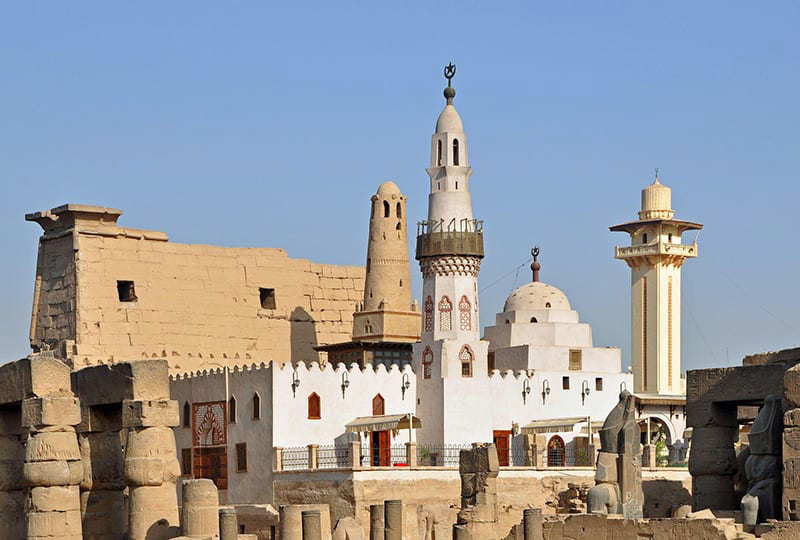
Most tours include a stop at Luxor Temple, which in my opinion isn’t as impressive as some of the other temples in Luxor, but if you go to the east side of the temple, you will find the entrance to the Mosque of Abu al-Hajjaj. When Egypt became a Christian country, the citizens of Luxor moved inside the temple complex and the village filled the ancient house of worship. Eventually, a mosque was built on top of and inside the temple and the prayer niche was cut directly into the temple walls, creating a surreal mishmash of religions.
Shopping and Dining in Luxor

For collectors, a stop at an alabaster factory on the West Bank is obligatory. The outside of the factories are decorated with colorful paintings. Be sure to ask for hand-carved alabaster, which has a rougher but more delicate appearance. Another reason to stay on the West Bank is to dine at the Nile-side Tutankhamun Restaurant. Run by a French-trained Egyptian chef, it features wonderfully seasoned takes on famous Egyptian dishes plus a chicken curry with apples and bananas that is to die for.
Aswan, On The Nile River

Aswan’s natural beauty surpasses that of any other city in Egypt. Its western cliffs are sandstone. The sunrise reflecting off them or the sunset behind them is a sight to behold. Be sure to book a hotel room on the Nile corniche with a view. If money is no object, reserve a room at the historical Sofitel Old Cataract Hotel. Even if you can’t afford to stay at Agatha Christie’s favorite hotel, be sure to enjoy the afternoon high tea on the terrace or dinner at its 1902 Restaurant. The midrange Basma Hotel also has amazing views and there are a number of budget hotels directly on the corniche whose views are equally spectacular without the frills.
Felucca Ride On The Nile

As you stroll the Nile corniche in Aswan, you are sure to be approached by a felucca captain offering to take you on a sail in his sailboat. It’s definitely worth taking an hour or two of your time. You can also visit some of the other sites around Aswan by felluca, such as the ancient town and temple on Elephantine Island, the botanical gardens on Kitchener’s Island, or the tombs of the nobles on the West Bank.
Nubian Museum in Aswan

As the southernmost city in Egypt, Aswan can be as hot as blazes. The Nubian Museum is open in the evenings and can provide a welcome air-conditioned respite from the heat. Its collection highlights the art and culture of Egypt’s southern neighbor, Nubia. Much of Nubia was submerged when the Aswan High Dams were built, but an archaeological salvage campaign rescued many artifacts from being lost forever.
Souq, Aswan’s Market
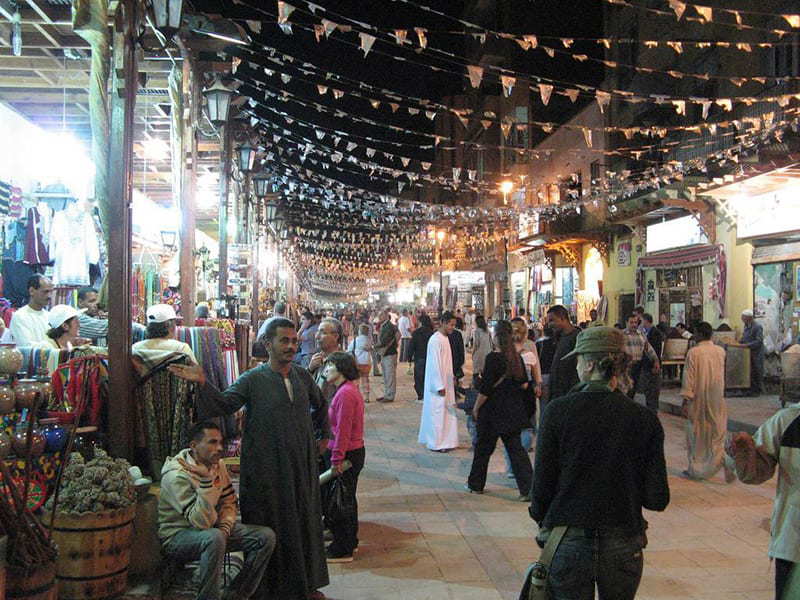
Since the Egyptian revolution, Aswan’s bazaar market (Souq) has gone over almost entirely to local needs with very few shops still catering to tourists. However, this means it is a hassle-free experience and an evening stroll along this street will give you an overview of daily life in the city.
I hope you find these destinations and landmarks as wonderful as I do. Safe Travels!








